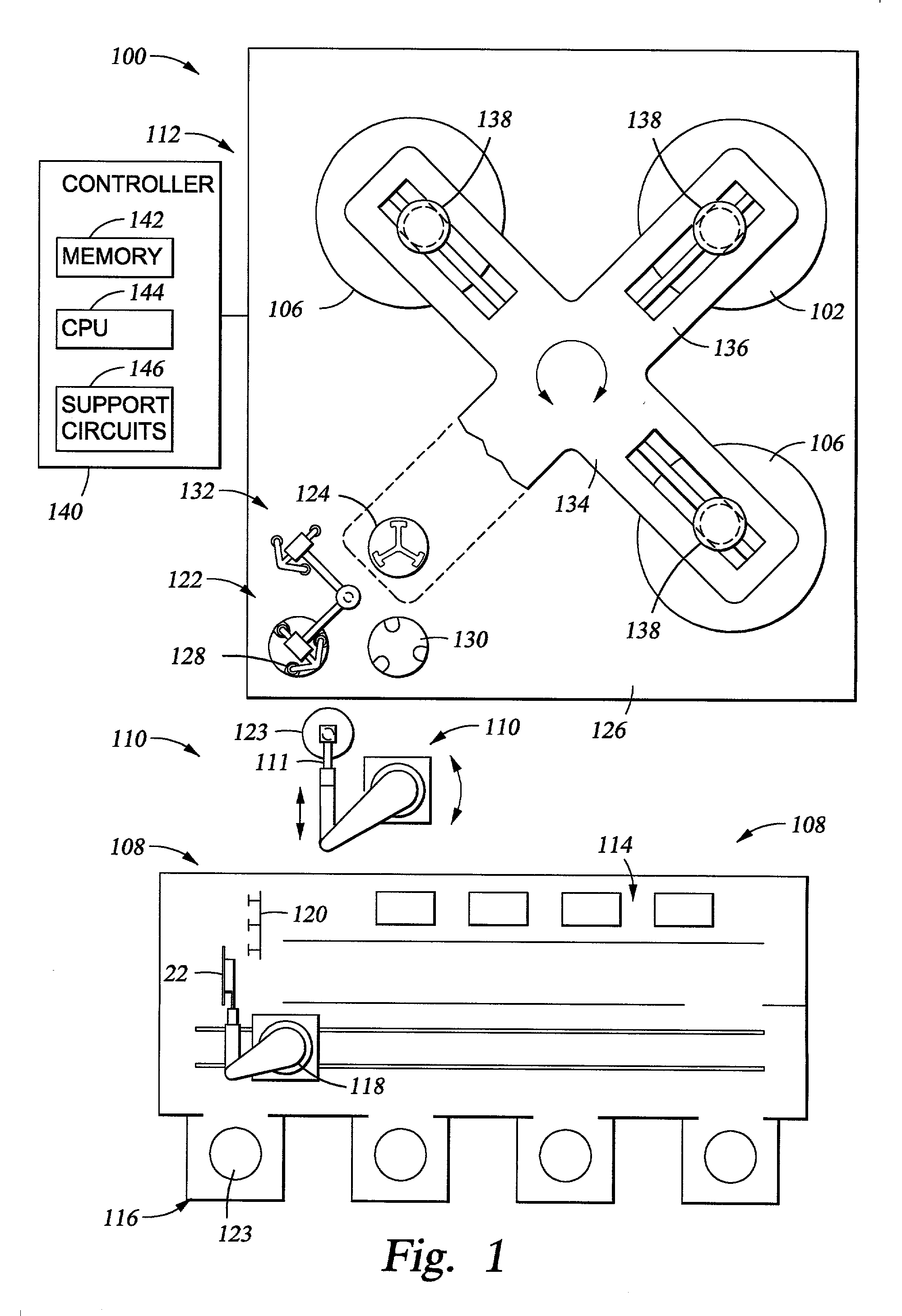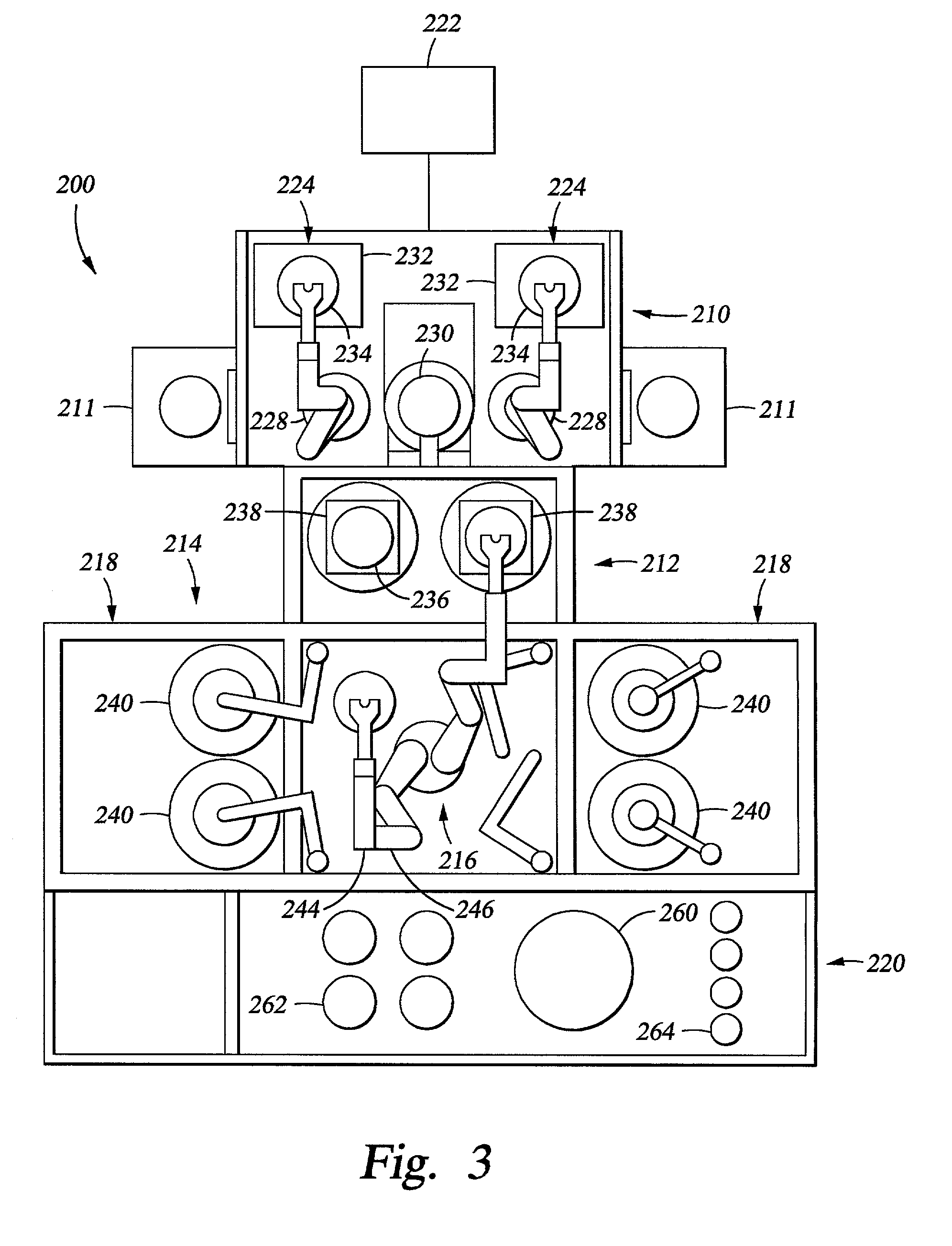Planarization of substrates using electrochemical mechanical polishing
a technology of electrochemical mechanical polishing and substrate, applied in the direction of electrolysis components, manufacturing tools, lapping machines, etc., can solve the problems of difficult to pattern and etch copper, and difficult to achieve effective conformal removal of copper material from the substrate surfa
- Summary
- Abstract
- Description
- Claims
- Application Information
AI Technical Summary
Benefits of technology
Problems solved by technology
Method used
Image
Examples
Embodiment Construction
[0035] In general, aspects of the invention provide apparatus and methods for planarizing a substrate surface with reduced contact pressure between a substrate and a polishing apparatus. The invention will be described below in reference to a planarizing process for the removal of conductive materials, such as copper and other copper containing materials from a substrate surface by electrochemical mechanical polishing (ECMP) techniques.
[0036] The words and phrases used herein should be given their ordinary and customary meaning in the art by one skilled in the art unless otherwise further defined. Chemical-mechanical polishing should be broadly construed and includes, but is not limited to, abrading a substrate surface by chemical activity, mechanical activity, or a combination of both chemical and mechanical activity. Electropolishing should be broadly construed and includes, but is not limited to, removing material from a substrate by the application of electrochemical activity, s...
PUM
| Property | Measurement | Unit |
|---|---|---|
| Pressure | aaaaa | aaaaa |
| Electric potential / voltage | aaaaa | aaaaa |
| Electric potential / voltage | aaaaa | aaaaa |
Abstract
Description
Claims
Application Information
 Login to View More
Login to View More - R&D
- Intellectual Property
- Life Sciences
- Materials
- Tech Scout
- Unparalleled Data Quality
- Higher Quality Content
- 60% Fewer Hallucinations
Browse by: Latest US Patents, China's latest patents, Technical Efficacy Thesaurus, Application Domain, Technology Topic, Popular Technical Reports.
© 2025 PatSnap. All rights reserved.Legal|Privacy policy|Modern Slavery Act Transparency Statement|Sitemap|About US| Contact US: help@patsnap.com



